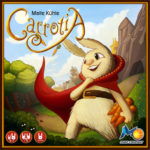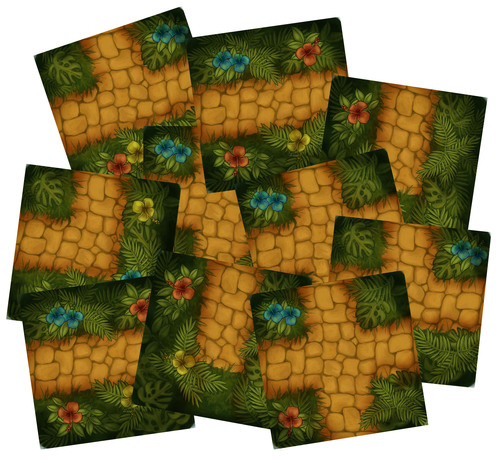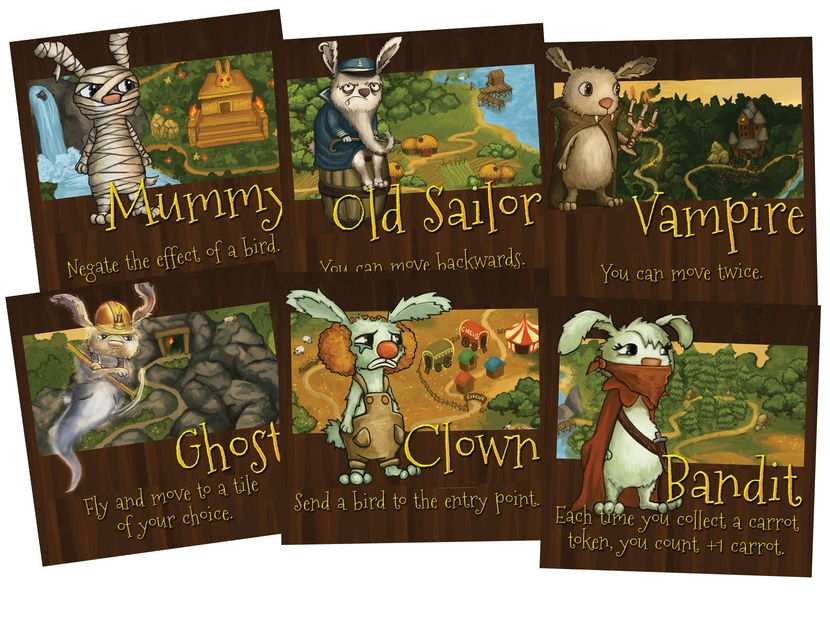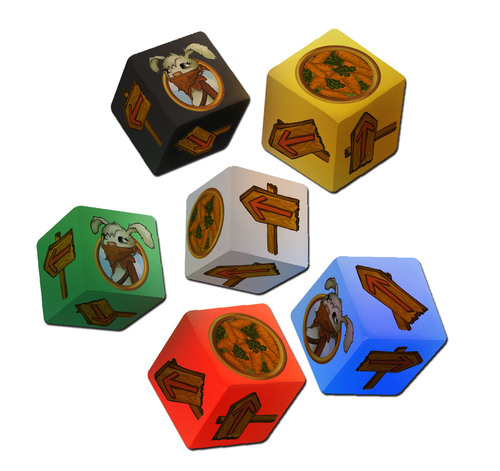Carrotia (Boardgame)
 Carriotia has players cooperate to quickly build a progressively bigger maze, moving their rabbit to collect carrots when they finish. A timed section has players laying out maze tiles to connect the start and end points of the maze, followed by an untimed phase where players take turns moving about the board trying to pick up the placed carrot tokens. The rabbit must exit the maze in a limited number of moves, and things can get complicated as various birds also move about and can affect the board. Complete three progressively larger mazes and then count your carrots to measure your performance. Thirty carrots is an incredible score, while collecting only ten carrots means there are hard times ahead this winter.
Carriotia has players cooperate to quickly build a progressively bigger maze, moving their rabbit to collect carrots when they finish. A timed section has players laying out maze tiles to connect the start and end points of the maze, followed by an untimed phase where players take turns moving about the board trying to pick up the placed carrot tokens. The rabbit must exit the maze in a limited number of moves, and things can get complicated as various birds also move about and can affect the board. Complete three progressively larger mazes and then count your carrots to measure your performance. Thirty carrots is an incredible score, while collecting only ten carrots means there are hard times ahead this winter.
Carrotia
Publisher: Mage Company
Ages: 8+
Players: 1-6
Time: 30 minutes
(Review copy provided by Mage Company)
The game begins with each player dealt a hand of square tiles that will be used to make up a central map. This varies from 5 tiles each for two players to only 2 tiles each for five or six players. A round 1 map card (there are several different ones) is flipped up and a 30 second timer is begun. Players now must take turns placing, replacing, or turning tiles in order to build up a 3×3 “maze” with their tiles. Each map card will indicate the entrance, the exit, which tiles will hold carrot tokens, and the starting locations of any birds. When 30 seconds are up, the board is checked for accuracy. If there is no path from the start to the end, or tiles are lined up incorrectly, the players are allowed to make corrections, but suffer a 2 carrot penalty.

In an untimed phase, players now take turns moving the communal rabbit token. First, a player rolls a die for each bird on the board (there is one bird in level 1, two in level 2, etc…) Next, a player moves the rabbit one space in any direction (following the paths), collecting any carrot tokens on which they land. Finally, any bird movement is resolved. Birds move about the board (up,down, right, left) and affect the rabbit’s movement, cause board changes, or limit carrots in some way. Players each have a special power they can use once per phase, such as flying around the board, affecting bird behavior, or collecting extra carrots. The rabbit token must leave the board in 10 rounds or the players lose 1 carrot from their score.

Once the first round is completed, more tiles are dealt out and a second maze card is flipped up. It displays a 4×4 maze with new carrot, bird, and entrance/exit points. Players now have 60 seconds to expand and modify the previous 3×3 maze into a 4×4 maze. As before, errors result in a point penalty. During the untimed movement phase, there are now two birds moving about the board and the rabbit must exit in 15 moves. A third and final round finishes the game by creating a 5×5 maze in 90 seconds where the rabbit token now needs to leave the maze in 20 moves.

An interesting variant to the game is included. Rather than freely moving the rabbit in the untimed phase, players all have 30 seconds to roll and place one of the bird dice. Once rolling is completed, the rabbit moves through the maze following the moves “programmed” by the dice rolls. Birds are not moved but if they are encountered their effect goes off. Any carrots encountered are picked up. In phase 1 (the 3×3 grid) all six bird dice are programmed and used once. In phase 2 (the 4×4 grid) the dice are rolled and programmed twice (with 30 seconds of rolling both times.) Phase 3 repeats as before but goes for three programmed turns. The final score is once again the total number of carrots collected.
Verdict
I am a sucker for cooperative games. Taking turns to build communal maze under a time limit is entertaining because one person might be trying to make path “A” but then another player is working to make the path differently. This juxtaposition of cooperation with a severe time limit provides some interesting gameplay. Thirty seconds is not much time, particularly for 3 or more players, to coordinate to make a valid (and useful) layout. Even with two players, my first few attempts were running right up against (or past) the time limit. So, there is some skill involved here. I also like the alternating speed (building) and untimed (moving) sections as it gives the game a good tense and then more relaxing flow. In the end, it isn’t a must-play game but is a solid cooperative game.
Kid Factor
With no text involved, the game can be played by nearly any age. Of course, the time factor may come into play with particularly younger kids, but that could easily be adapted by extending or getting rid of the time constraints. Perhaps even just doing the 3×3 or 4×4 puzzles as an option.
**Caveat: I do need to note that this game originally appeared in extremely limited quantities with a terribly poor rulebook. The general release (what you’re going to find in a store) rules are much improved (at least the beta rules I was given) but could have been a bit clearer in a few minor cases.





Discussion Area - Leave a Comment